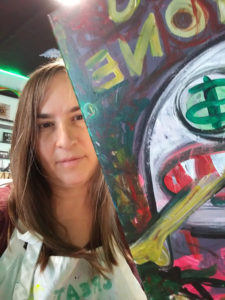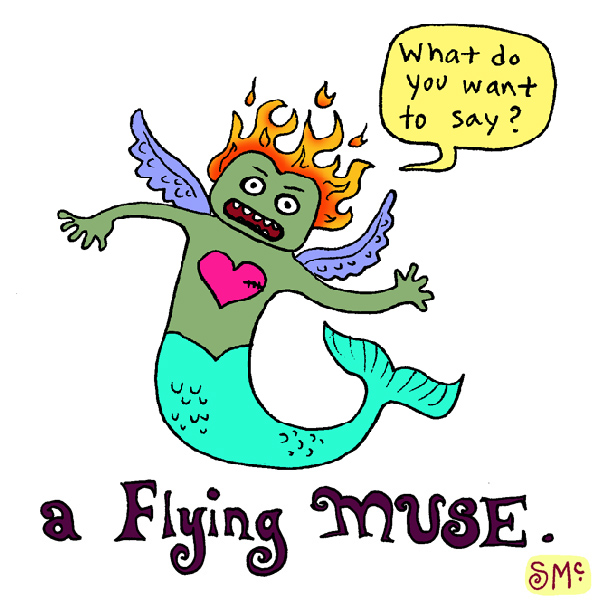I remember years ago walking down the street looking at trees, wondering what do we need art for, what do we need paintings of trees for, when the trees themselves are right here and they’re more beautiful that any interpretation of them can possibly be, and we can simply look at them directly?
I wondered: isn’t art just a poor substitute for reality? Doesn’t a painting of a tree (for example) just put itself between us and the real tree like a wall, allowing us to ignore the real tree and care less about it, in favor of the fake image? We might assume that depictions of nature in art are meant to connect us with it and help us appreciate it more, but doesn’t image-making in fact distract our attention away from the real world and thereby contribute to the disconnection of humans from the rest of nature, which is a big part of the problem that’s facilitating the destruction of the planet?
I agonized over this, felt confused, and for a long time didn’t draw the beings around me. But I draw some of them now, from an impulse and with a feeling that is the opposite of disconnection, but is more like respect, reverence, love — and wanting to share that with other humans. The act of drawing someone can be a process of learning to know them. It’s close observation and bringing whom we see into our own bodies from our eyes to our hands as we create an interpretation that’s a combination of them with elements of our own imagination. It’s a very intimate act of connection that should be done thoughtfully and with respect.
Recently I drew a spiny orb weaver. I’ve also painted one, and made a wood cut-out of one. I am aware of a danger of symbolizing them. I think about this as potentially a problem.
I see these kind of spiders every day. I say hello to them. I try to stay out of their way, ducking under their webs rather than breaking them, if they’re in the middle of my path. I notice them with an open heart, with affection. And yet with a very few exceptions I don’t recognize or distinguish between individual ones. I like them as a species — I’m not sure that’s enough.
Do I offer the real ones less attention because I’ve made images of them? Does looking at the art take away from interacting with the spiders outside? I reflect on my behavior and don’t think that’s happening. Instead, creating and viewing the images seems to lead me to be more aware of the real ones because it would feel weird, out of alignmnet, hypocritical, to care more for the images than for the beings themselves. The art brings the spiders into more mindspace.
When I share the images, I’m inviting others to offer attention and connect together in care for these kind of spiders (and individual ones, plus other kinds of spiders by extension). The image is saying: spiny orb weavers are important. They are not to be dismissed or ignored. They are to be honored and respected, known and loved. When we see them don’t sweep their webs aside, but say hello.
Still I recognize the dialectic at work here, a unity of opposites: the danger of disconnection through mediation is always present and intertwined with art-as-connection. It’s not one way or the other but always both, and our intention matters, and it’s necessary to be careful.


